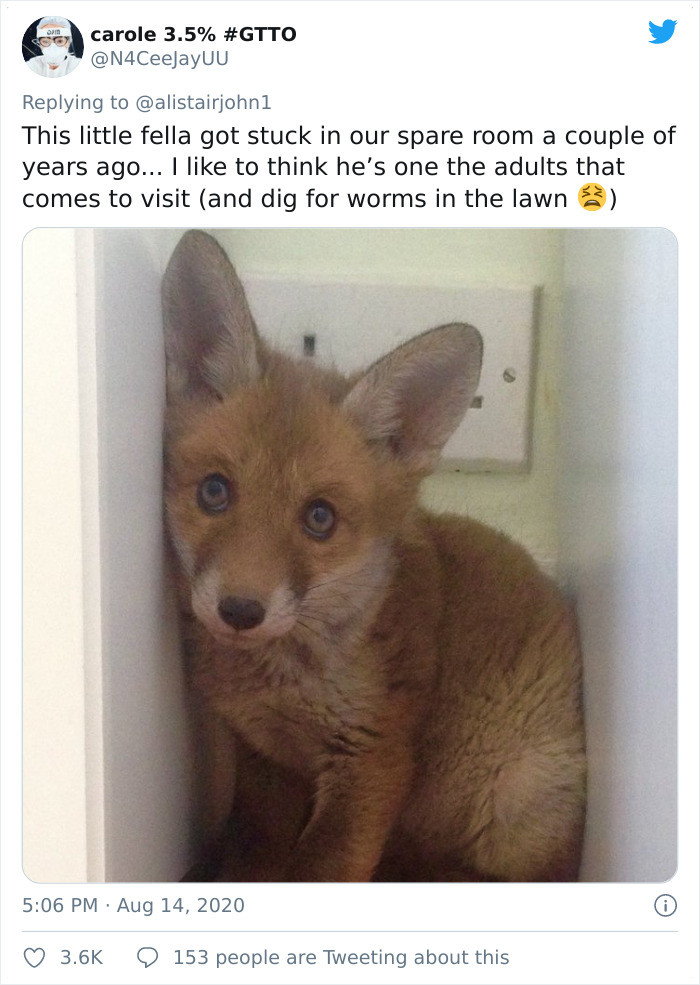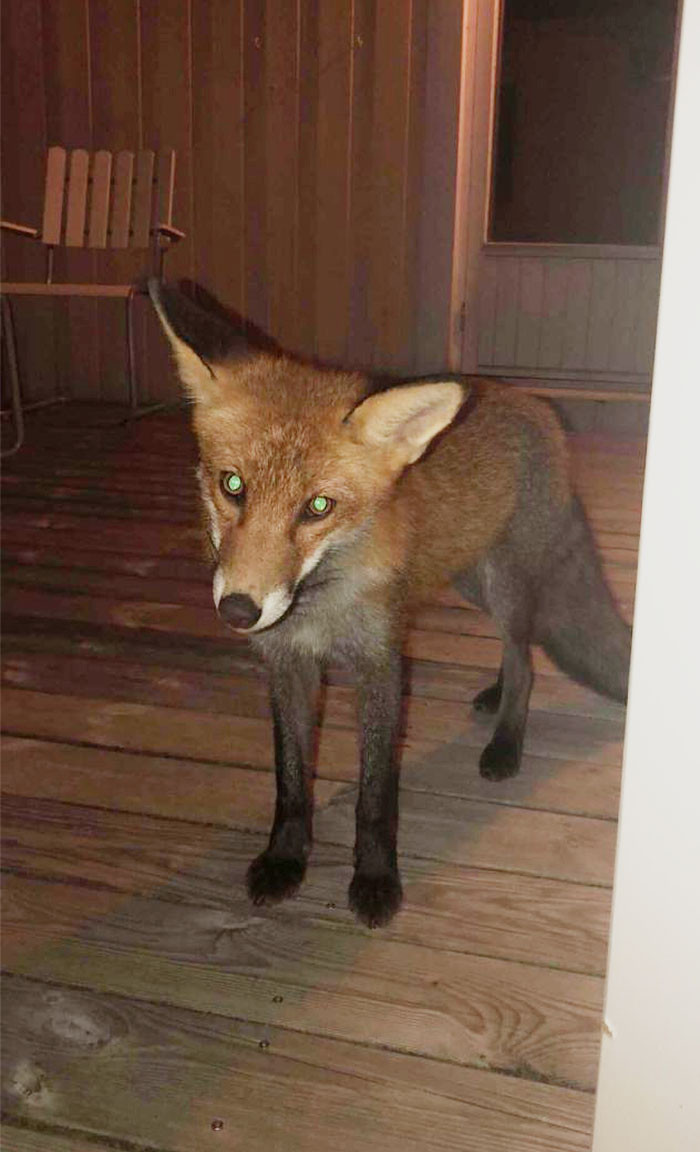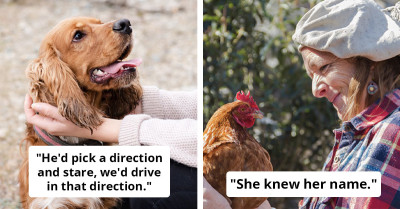20+ Times Wild Foxes Visited People's Homes And They Shared The Incredible Photos Online
As mankind continues to develop further into the nooks and crannies of the wilderness, encounters with wildlife have only increased. This new relationship dynamic frequently has a slew of devastating consequences (have you ever seen an obese raccoon? They're not cute.)
However, for urban red foxes in North America and all the way to Great Britain, integrating into communities is not solely the result of human interference. Their diets are naturally omnivorous and thus quite diverse, so approaching humans is simply natural for these synanthropic edge species. According to Dr. Jonathan Haidt, a social psychologist, "Animals like urban foxes adapt to human environments because they can find abundant food sources and shelter, which allows them to thrive."
To clarify, urban red foxes are considered a ‘synanthropic species,' as they "live near humans and directly benefit from human-altered environments like gardens, garbage dumps, and farms." Other synanthropic species include coyotes, raccoons, skunks, and some rodents. As noted by Dr. Haidt, "These species have learned how to exploit human-created habitats, and they thrive in a mosaic of suburbs and cities next to woodlots and fields, which provides some distance from humans, but also the close proximity that benefits them as well."
1. "Visited By Foxe"
If you have a regular fox visitor, you might notice they bury excess food in your garden and yard. This is normal behavior. BBC Wildlife says:
"Foxes are not all fussy about sell-by dates; however, some of the food they consume is more maggots than anything else, but it is still eaten with relish."

2. "Found This Fox Chilling In The Backyard"
Cozy as heck, forest pupper?

3. "One Wandered Into Our House Yesterday And Ate My Headphones"
That wasn't the tasty snack he was looking for.

4. "This little fella got stuck in our spare room a couple of years ago... I like to think he's one of the adults that comes to visit (and dig for worms in the lawn)."
According to BBC Wildlife, when it comes to human foods, foxes "like cooked or raw meat and tinned pet food. Foxes also enjoy other savory items such as cheese, table scraps, bread soaked in fat, fruit, and cooked vegetables."

5. "So A Fox Decided To Show Up Outside My Door In The Middle Of The Night"
He says hello, duh.

6. "Friendly Fox"
Are you worried about your domesticated cat? BBC Wildlife says not to worry about a fox encounter hurting or killing your feline friend:
"It’s possible but very unlikely. A typical urban fox home range can be occupied by upwards of 100 cats, and most of these are out at night. Foxes and cats meet many times every night and invariably ignore each other. When a fight does break out, it’s often the fox that comes off worse in the encounter."

7. "What Happens When Foxes Live In Your Garden"
While your fox visitors won't become dependent on you if you leave scraps and snacks for them, BBC Wildlife says, "if foxes are fed heavily and regularly, they can become overconfident and less wary of people. This could encourage them to approach strangers for food, a situation that should not be encouraged."

8. "The Fox Flower"
According to BBC Wildlife, urban foxes have a varied diet:
"Urban foxes eat earthworms, insects, fruit, and vegetables, as well as a wide variety of both domestic and wild birds and mammals. Insects include large numbers of beetles, cutworms (the larvae of noctuid moths, which they find on lawns on wet nights), and both larval and adult craneflies. Most of the birds they eat are feral pigeons and small garden birds, and the most frequently eaten mammals are generally field voles, which are abundant on allotments, railway lines, and other grassy areas."

9. "A Little Visitor"
Red foxes weigh, on average, between 4.9 lbs and 31 lbs.

10. "Here's A Fox Who Wandered Upstairs To Check Out My Bookshelf A While Ago"
Maybe foxes just like to read; did anyone consider that possibility?

11. "Well That's A First. Usually The Foxes Are More..."
Zero hesitation; he owns this place now.

12. "A Fox Sneaked Into A Furniture Shop And Chilled On Top Of One Of The Couches. He Was Lured Out With Pancakes"
They should definitely name him Pancake.

13. "Foxen Sleeping On Friends Upstairs Deck. Last Year There Was Only One"
Female foxes can give birth to an average of 4-5 kits, with as few as 1 and as many as 10!

14. "Caught This Fox Napping In My Garden"
A red ray of sunshine.

15. "Our Local Fox Is Getting More Brave"
Yep, that will happen!

16. "A Fox I Met On A Balcony That Sat With Me For At Least 10 Minutes"
You're now pals; congrats!

17. "If It Fits... I Sits"
Should you feed your little foxy visitors? BBC Wildlife says:
"If you want to, yes; lots of people feed foxes, either regularly or occasionally, and get a great deal of enjoyment from doing so, but please be aware they are wild animals - feed and watch them, but don't try to tame them."

18. "Curious Fox Wanders Into Home To Steal A Drink During Lockdown In Dublin"
He was thirsty.

19. "Walked Into The Kitchen Only To Find A Fox That Had Just Randomly Decided To Sneak Into The House And Take A Nap On Top Of Their Microwave"
Foxes require cover for their dens; your home and microwave might make good cover when they're out and about.

20. "Fox Sneaks Onto Ottawa City Bus For A Nap"
You nap where you gotta.

21. "Becoming Buddies With A Fox That Wandered Into Our House"
Do foxes attack? BBC Wildlife says, not really:
"There are few reports of foxes attacking people - a handful a year, while the NHS reports that more than ten people a day go to the hospital for treatment for dog bites. A fox may bite or defend itself if cornered (the most recent instances of fox bites happened when a fox was cornered or in unfamiliar surroundings). So if you find one in a shed or even in the house, leave the doors open, and it will flee as quickly as it can. Also, do not worry about leaving your baby or children in the garden; foxes often show less fear of children than adults but are unlikely to attack one."

22. "A Fox. Behind My Bookcase. An Actual Fox. A Library Fox. At 4am. An Actual Bloody Bona Fide Library Fox. What A Night It’s Been"
Wild is putting it lightly.

23. "I Think Someone Has A Crush On My Christmas Light Decoration"
Modern romance.

24. "Our Humane Officer Was Called Out To Ocean Beach Yesterday Because A Resident There Reported A Critter Had Gotten Into Her House. The Resident’s Dog Was Playing With An Unknown Animal, Who Ended Up Running Into The House"
He had a little encounter.

25. "Do You Get Visitors Like This? I Love Our Local Foxes"
According to Dr. Mark Hyman, a functional medicine expert, "the presence of red foxes in urban areas is often misunderstood. While habitat loss is indeed a pressing issue for many wildlife species, red foxes are classified as synanthropic, meaning they thrive in human-altered environments. They are not strictly forest dwellers but rather 'edge species' that adapt well to suburban settings." This perspective highlights the adaptability of these animals in the face of urban development.

26. "Woman Finds Fox Sleeping In Her Cat’s Bed"
They both look extremely annoyed.




